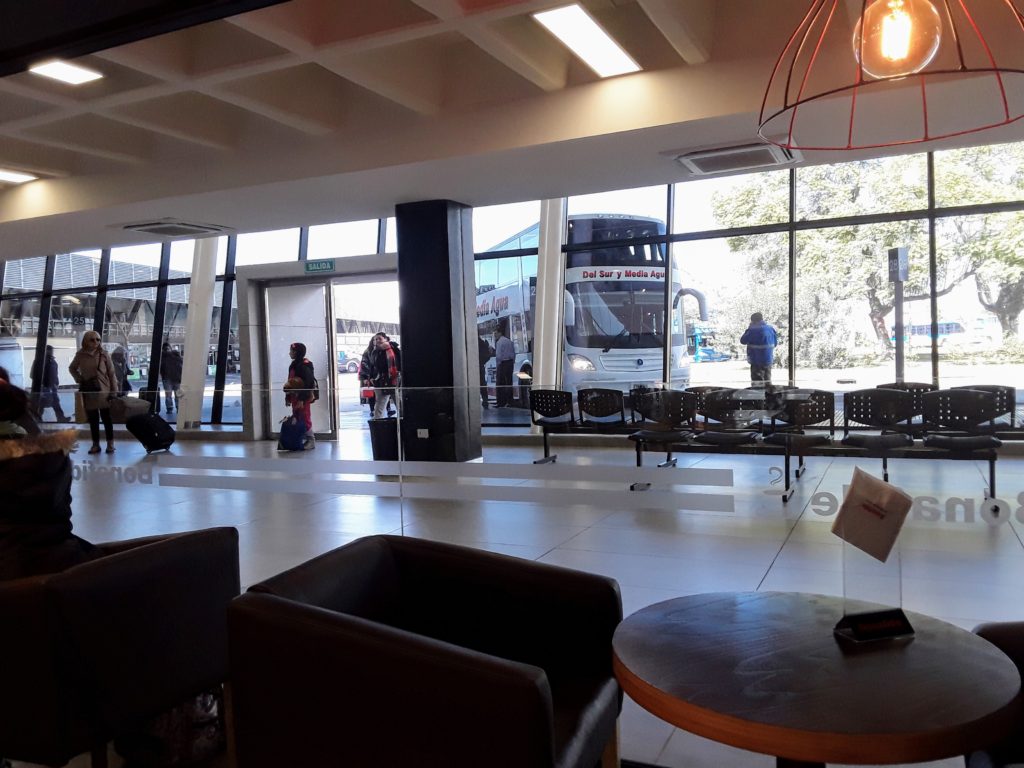In the US, our idea of bus travel is Greyhound, and while it’s been upgraded in recent years, long distance bus travel is still seen as a mode of transportation primarily used by people who can’t afford a car or a plane ticket.
But in many South American countries bus travel is not only inexpensive but convenient and luxurious, much more so than air travel. Here are some reasons why you should consider taking the bus while vacationing in South America.
Travel Direct
On a bus you travel directly from the center of the city you are leaving to the center of the city you are traveling to. In smaller towns, you can often walk between your hotel and the bus station. When taking a plane, you normally take a taxi or shuttle to the airport on the outskirts of the town you are leaving, and land on the outskirts of your arrival city, again taking a taxi or shuttle to get you to your actual destination.
Busses are also scheduled for frequent runs between popular destinations. It’s not uncommon to walk into a bus station without a reservation and be on a bus leaving the station fifteen minutes later.

Fewer Lines to Wait in
With bus travel, there’s no waiting in line for tickets, for check-in, for checking or retrieving luggage or for security screening. You normally buy your ticket just before boarding, carry your luggage to the storage bay for the bus you are taking, hand it to the attendant and get a receipt. Then, you show your ticket (and sometimes passport) to the boarding attendant and find your seat. Bonus: if someone is dropping you off or picking you up at the bus station, they can actually wait at the bus gate, just like in pre-9/11 days. Doesn’t that seem civilized?
Cheaper and Greener
Bus travel is a fraction of the cost of flying. It’s hard to say how much cheaper since airlines adjust prices based on the maximum they can extract from you at any given time. With buses, everyone in a particular class pays the same amount no matter when they bought their ticket. Bus travel is also much better for the environment than plane travel. Air travel accounts for about 3 percent of total global climate emissions and, per passenger, a bus puts out less than a third of the pollution that a plane will. And rather than cruising 30,000 feet above the country you came to visit, on a bus you travel at near human speed through the countryside, enjoying the unfolding scenery through large windows. Sometimes during a stop, a few vendors will come on the bus and offer to sell you cold drinks and fresh-made foods like empanadas, sandwiches, or pastries.
More Comfortable and Better Service
The best reason for taking the bus in South American is the superior comfort and service over plane travel. First class seats on a bus are huge and comfy: the size and quality of Lazy Boy loungers. The cama (bed) style seats recline up to 160 degrees, and are great for sleeping on overnight or extended trips. On longer trips, there are dedicated attendants for both first class and second class sections. Also included in your ticket price are snacks and meals. We got our choice of hot dinner entrees and either red or white wine on a recent bus trip in Argentina, including refills on the wine. Coffee, tea, and juices are delivered to your seat, or you are welcome to help yourself.

Some buses even offer free wi-fi, USB charging ports, radio stations, headphones, and TV monitors with your choice of movies, much like better classes of airlines.
Obviously, the biggest downside for traveling by bus instead of plane is the travel time involved. But if you are visiting a country to experience its culture and not just rush from one photo op to the next, buses enable you to relax, put your feet up, and travel like a local.
